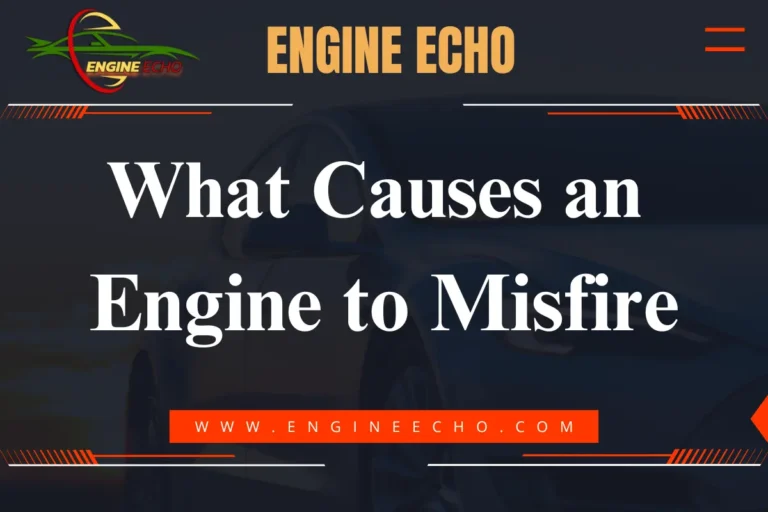Fuel Cap and Check Engine Light: What’s the Connection?

Key Takeaway
If your check engine light has come on, one of the first things to check is your fuel cap. It might seem minor, but believe me, that little cap plays a big role in keeping your car running smoothly and cutting down on emissions.
Fuel Cap and Check Engine Light: What’s the Connection?
When the dreaded check engine light pops up on your dashboard, it’s easy to feel a surge of panic. Trust me, I’ve been there! One of the most common culprits that often gets overlooked is the fuel cap. It may not look like much, but this small component is essential for keeping your vehicle in top shape. Understanding the link between your fuel cap and the check engine light can save you time, money, and a lot of unnecessary stress.
Your fuel cap serves several important functions in your vehicle’s fuel system. Keeping it in good condition can make a world of difference in your car’s performance and your wallet.
Understanding the Fuel Cap’s Role
So, what’s the deal with the fuel cap? Here’s the scoop:
- Sealing the Fuel Tank: The fuel cap’s main job is to seal the fuel tank. This prevents fuel from evaporating and helps save you money at the pump. Plus, it’s better for the environment. I always feel good knowing I’m doing my part by keeping my fuel system in check!
- Preventing Contaminants: A secure fuel cap keeps dirt, dust, and moisture out of the tank, protecting the fuel system from potential damage. It’s amazing how something so small can have such a big impact!
- Maintaining Pressure: The fuel system operates under pressure, and the fuel cap helps maintain that necessary pressure for optimal engine performance and fuel delivery. It’s like giving your fuel tank a tight hug!
When the cap is loose, damaged, or missing, it can trigger the check engine light. This happens because the engine control unit (ECU) detects a drop in fuel pressure, signaling a potential leak. Ignoring this issue can lead to more severe problems that affect your vehicle’s performance and efficiency.
Common Symptoms of a Faulty Fuel Cap
Recognizing the symptoms of a faulty fuel cap can help you address the issue quickly. Here are the most common signs to watch for:
- Check Engine Light: A loose or faulty fuel cap is a common reason for the check engine light to come on. If you notice this light illuminated, it’s one of the first things I check.
- Fuel Smell: If you catch a whiff of fuel, especially near the back of your car, it might indicate a leak due to a damaged cap. This is something you definitely don’t want to ignore—it can pose safety risks!
- Decreased Fuel Efficiency: If you find yourself filling up more often than usual, it could be due to a compromised fuel system. A faulty fuel cap can lead to poor fuel economy, costing you more in the long run.
- Difficulty Starting the Engine: In some cases, a faulty fuel cap can lead to issues with starting your engine. If you find your car struggling to start, it’s worth checking the cap.
- Pinging Noises: If you hear unusual sounds coming from the engine, it could signal an issue with the fuel system, potentially linked to the fuel cap.
- Dashboard Warning Indicators: Aside from the check engine light, keep an eye out for other warning indicators on your dashboard. They can provide valuable insights into your vehicle’s condition.
Steps to Check Your Fuel Cap
If you suspect that the fuel cap might be the cause of your check engine light, follow these steps to assess and potentially resolve the issue:
- Inspect the Cap: Start by visually examining the fuel cap for any cracks, tears, or signs of wear. A damaged cap may not seal properly, leading to fuel evaporation and pressure loss.
- Clean the Cap and Surrounding Area: Dirt and debris can accumulate around the cap, preventing a proper seal. I usually give it a quick wipe down with a clean cloth to keep things in order.
- Tighten the Cap: Ensure the cap is secure. You should hear a click when it’s locked in place. A properly tightened cap will help maintain the necessary pressure within the fuel system.
- Reset the Check Engine Light: Sometimes, the check engine light may turn off after a few drives if the issue has been resolved. If your vehicle has an onboard diagnostic tool, you can also use it to clear the code.
- Monitor for Changes: After checking and securing the fuel cap, pay attention to any changes in the vehicle’s performance. If the check engine light remains on, further investigation may be needed.
When to Seek Professional Help
If tightening or replacing the fuel cap doesn’t resolve the check engine light, it’s time to consult a mechanic. There could be underlying issues, such as:
- Faulty Sensors: The fuel system relies on various sensors to monitor pressure and fuel flow. A malfunctioning sensor could trigger the check engine light.
- Leaking Fuel Lines: If the fuel lines are damaged or corroded, they may leak fuel, leading to pressure loss and triggering the light.
- Evaporative Emission Control System (EVAP) Issues: The EVAP system prevents fuel vapors from escaping into the atmosphere. Problems with this system can cause the check engine light to illuminate.
- Fuel Pump Malfunctions: A failing fuel pump can lead to inadequate fuel delivery, affecting engine performance and triggering warning lights.
- Engine Performance Problems: Other engine-related issues can also cause the check engine light to come on. A professional diagnostic will help identify the root cause.
Importance of Regular Maintenance
I can’t stress enough how crucial preventive maintenance is for keeping your vehicle in good condition. Regularly checking your fuel cap and other components of the fuel system can help avoid costly repairs and keep your vehicle running smoothly. Here are some maintenance tips:
- Regular Inspections: Incorporate regular inspections of your fuel cap and other critical components into your vehicle maintenance routine. Look for signs of wear and tear, and address any issues promptly. It’s a small step that can lead to big savings!
- Fuel System Cleaning: Consider having your fuel system cleaned periodically to remove carbon buildup and improve efficiency. From my experience, this service can help extend the life of your fuel system and maintain optimal performance.
- Use Quality Fuel: Filling up with high-quality fuel can help prevent deposits from forming in your fuel system. Cheaper fuels may contain additives that can lead to issues over time.
- Follow Manufacturer Recommendations: Always adhere to your vehicle manufacturer’s maintenance schedule. Regular oil changes, fuel filter replacements, and other recommended services are essential for keeping your vehicle in top shape.
- Pay Attention to Warning Signs: If you notice any unusual sounds, smells, or performance issues, don’t ignore them. Addressing these concerns early can prevent more significant problems down the line.
The Environmental Impact
Maintaining a properly functioning fuel cap is not only essential for your vehicle’s performance but also for the environment. A faulty fuel cap can lead to increased fuel evaporation, contributing to air pollution and greenhouse gas emissions. By ensuring your fuel cap is secure and functioning correctly, you play a part in reducing your carbon footprint.
- Reduced Emissions: A tight and functional fuel cap prevents harmful vapors from escaping into the atmosphere. This is particularly important for reducing volatile organic compounds (VOCs), which contribute to air pollution.
- Fuel Efficiency: Keeping your fuel system in good condition helps improve fuel efficiency, leading to lower overall fuel consumption. This not only saves you money but also reduces the demand for fossil fuels.
- Compliance with Regulations: Many regions have strict regulations regarding vehicle emissions. Ensuring your fuel system is functioning correctly can help you stay compliant with these laws, avoiding potential fines and penalties.
Conclusion
The connection between your fuel cap and the check engine light is significant. Regularly checking your fuel cap can help maintain your vehicle’s efficiency and keep that pesky light off. If the light persists after addressing the cap, don’t hesitate to seek professional advice to ensure your vehicle runs smoothly.
Understanding the importance of the fuel cap and its role in your vehicle’s performance can save you time and money. By being proactive about maintenance and addressing issues as they arise, you can keep your vehicle in optimal condition while contributing to a healthier environment.
Remember, a small component like the fuel cap can have a big impact. Don’t overlook its importance; taking care of it can lead to a smoother, more efficient ride. From my experience, keeping a small toolkit handy is always a good idea—you never know when a simple check could save you time and money!
FAQs
1. Why does my check engine light come on when the fuel cap is loose?
The check engine light illuminates because a loose fuel cap can cause a drop in fuel pressure, which the vehicle’s computer detects as a potential leak in the fuel system.
2. How do I know if my fuel cap needs to be replaced?
Look for signs of wear, such as cracks, a damaged seal, or difficulty tightening it. If it doesn’t seal properly, it’s time for a new one.
3. Can I drive with a loose fuel cap?
While you can technically drive with a loose fuel cap, it’s not advisable. It can lead to poor fuel efficiency and increased emissions, so it’s best to tighten or replace it as soon as possible.
4. How often should I check my fuel cap?
Make it a habit to check your fuel cap whenever you fill up or at least once a month. Regular checks can help prevent issues before they arise.
5. Will the check engine light turn off by itself after fixing the fuel cap?
In many cases, yes. If the issue is resolved, the light may turn off after a few driving cycles. However, if it stays on, you might need a professional diagnostic to check for other issues.
Thanks for checking out this article on EngineEcho.com! Hope you found this article: "Fuel Cap and Check Engine Light: What’s the Connection?" helpful! If you liked it and want to dive into more car engine topics, head over to our homepage. There's always something new to discover in the world of engines. Enjoy your reading journey!
Check out our previous article: Can the Gas Cap Cause the Check Engine Light to Come On?






